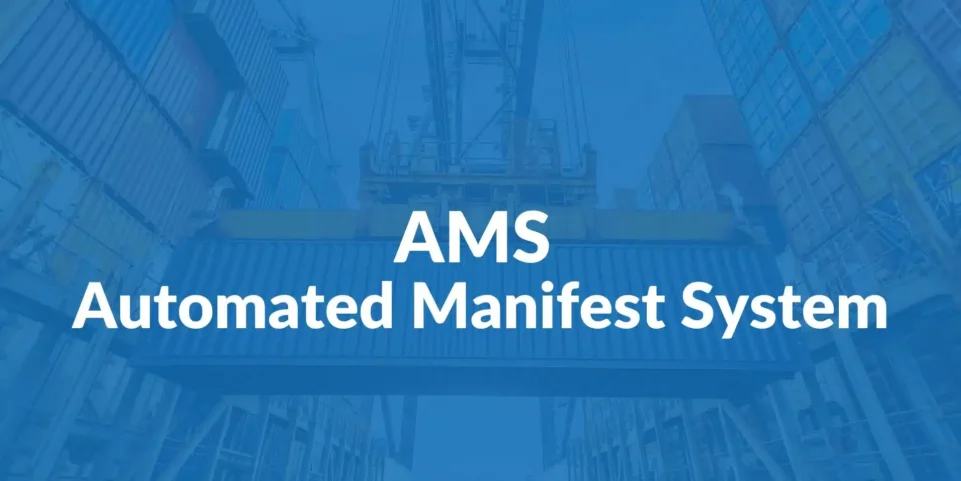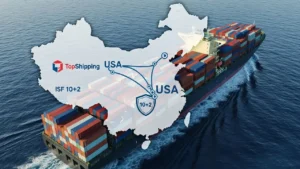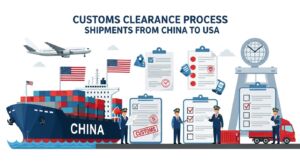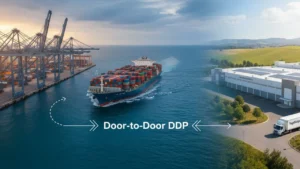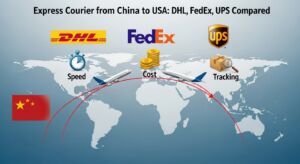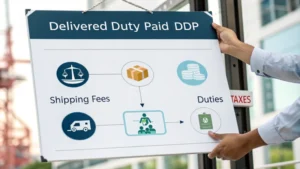What is AMS?
US Customs uses the Automated Manifest System (AMS) as a crucial system to submit necessary paperwork for shipments entering the United States. Introduced in 2004, AMS requires airlines and ocean carriers to give precise information on cargo arriving at US ports and airports within defined time frames. Freight forwarders typically handle AMS filings rather than carriers.
There are two key stages for filing shipment details:
Pre-loading Cargo Reporting: According to the 10+2 requirements, carriers must submit the Importer Security Filing (ISF) along with two other documents at least 24 hours before loading the shipment into the vessel or aircraft for the primary transit. Carriers are required to provide five ISF data components for goods in transit.
Pre-arrival Conveyance Report: Before the ship arrives at the port, forwarders must file a customs entry lodgement utilising information from the ocean manifest (House Bill of Lading) and the commercial invoice.
Benefits of using AMS
The Automated Manifest System (AMS) offers several benefits for both customs authorities and the shipping industry. Here are some key advantages:
Improved Efficiency
AMS speeds the filing and processing of shipping paperwork, lowering the time required for cargo clearance. This efficiency helps reduce delays at ports and airports, permitting speedier movement of goods.
Enhanced Security
By requiring extensive cargo information prior to arrival, AMS assists US Customs in identifying and mitigating potential security threats. The 10+2 regulations, in particular, give vital data for risk assessment, which improves national security.
Accuracy and Compliance
Automated filing reduces human mistake in documentation, resulting in greater accuracy and compliance with customs laws. This decreases the probability of fines, penalties, and shipment rejections caused by erroneous or missing information.
Better Inventory Management
Shippers and freight forwarders can better manage their inventories with timely and accurate data reporting. This results in better logistical planning and coordination, which improves overall supply chain management.
Cost Savings
Reduced delays and faster processing times lead to decreased storage expenses and demurrage fees. The automation of document submission reduces administrative costs and the requirement for manual interventions.
Real-time Tracking and Visibility
AMS enables real-time tracking and visibility of shipments, allowing stakeholders to track the progress and location of their items throughout the shipping process. This transparency promotes proactive decision-making and improves customer service.
Compliance with International Standards
Using AMS guarantees that shipping processes are consistent with international trade standards and regulations, resulting in smoother cross-border transactions and stronger global commercial connections.
Environmental Benefits
The decrease of paper-based paperwork and the streamlining of logistics procedures all contribute to a lower carbon footprint, promoting ecologically sustainable practices in the shipping business.
By leveraging the advantages of AMS, businesses can improve their operational efficiency, enhance security, and achieve greater accuracy and compliance in their shipping processes.
How AMS works
The Automated Manifest System (AMS) operates as a key component of U.S. Customs’ strategy to enhance the efficiency, accuracy, and security of international shipping. Here’s a detailed look at how AMS works:
1. Data Submission
Freight Forwarders and Carriers:
The procedure starts with freight forwarders or carriers who must submit cargo information to AMS. This comprises information regarding the shipment’s contents, origin, destination, and persons involved.
Electronic Submission:
Information is sent electronically via a secure system, which is frequently integrated with the shipping company’s existing logistical software.
2. Pre-Loading Requirements
10+2 laws:
These laws require carriers to deliver the Importer Security Filing (ISF) and two extra documents at least 24 hours before the cargo is put onto a ship or plane for passage to the United States.
ISF Data components:
Carriers must submit five ISF data components for products in transit, which include information about the manufacturer, supplier, buyer, and consignee.
3. Processing by Customs
Automated Screening:
After the data is submitted, AMS does an automated screening to ensure its completeness, accuracy, and compliance with US Customs laws.
Risk Assessment:
Based on the information provided, the system determines the risk associated with the shipment. High-risk cargo may be marked for additional scrutiny or documentation.
4. Pre-Arrival Reporting
Conveyance Report:
The forwarder produces a conveyance report prior to the ship’s arrival at a US port. This report contains extensive information from the ocean manifest (House Bill of Lading) and Commercial Invoice.
Customs Entry Lodgement:
This information is used to submit a customs entry, which is required for the goods to be cleared upon arrival.
5. Real-Time Updates
Tracking and Visibility:
Throughout the shipping process, AMS delivers real-time data on cargo status and location. This enables shippers, consignees, and customs agents to continuously track the package.
6. Cargo Clearance
Arrival and examination:
When the cargo arrives at the US port, it may be subjected to physical examination depending on the risk assessment conducted by AMS.
Customs Clearance:
If the cargo passes inspection and all documentation is correct, it is cleared by customs. The cargo can then travel to its final destination without any extra delays.
7. Benefits and Efficiency
Streamlined Processes:
AMS automates several components of the shipping and customs clearing processes, decreasing paperwork, minimising human error, and expediting the flow of goods.
Enhanced Security:
By providing thorough information ahead of time, AMS assists US Customs in identifying and mitigating potential security hazards before they reach the US border.
Regulatory Compliance:
Ensures that all shipments meet U.S. import standards, lowering the risk of penalties and fines.
Integrating these stages improves the overall efficiency and security of international shipping, allowing for smoother trade and improved regulatory compliance.
Integration with customs procedures
The Automated Manifest System (AMS) integrates seamlessly with U.S. Customs procedures to streamline the importation process and ensure compliance with regulatory requirements. Here’s how AMS integrates with customs procedures:
Integration with customs procedures
The Automated Manifest System (AMS) integrates seamlessly with U.S. Customs procedures to streamline the importation process and ensure compliance with regulatory requirements. Here’s how AMS integrates with customs procedures:
1. Data Collection and Submission
Electronic Data Interchange (EDI): AMS uses EDI to receive data from freight forwarders and carriers. This includes shipment details like the House Bill of Lading, cargo description, and consignee information.Automated Broker Interface (ABI): Through ABI, brokers can submit entry summaries and other required documentation directly to U.S. Customs.
2. Pre-Arrival Requirements
Importer Security Filing (ISF) and Additional Data: Under the 10+2 regulations, carriers must submit ISF data along with two other documents 24 hours before loading. This data is crucial for risk assessment and security checks.ISF Data Elements: These elements include information about the manufacturer, seller, buyer, consignee, and more, which help customs in evaluating the risk of the shipment.
3. Risk Assessment and Screening
Automated Targeting System (ATS): AMS interfaces with ATS to assess the risk of each shipment. ATS uses algorithms to analyze data submitted through AMS, identifying high-risk shipments for further scrutiny.Preliminary Screening: Before arrival, customs officials use the data to perform preliminary screenings, checking for compliance and potential security threats.
4. Pre-Arrival Notification
Conveyance Report: Prior to the vessel’s arrival, the conveyance report is submitted, containing comprehensive details from the ocean manifest and commercial invoice. This report helps customs prepare for the shipment’s arrival.Customs Entry Lodgement: This involves lodging the customs entry based on the manifest data, which ensures all necessary information is available for customs review upon arrival.
5. Arrival and Inspection
Automated Cargo Manifest System (ACMS): Upon arrival, AMS works with ACMS to cross-reference manifest data with the actual cargo. This helps customs officials verify the accuracy of the submitted data.Physical Inspection: If a shipment is flagged as high-risk, it undergoes physical inspection. AMS provides the necessary documentation and data to facilitate this process efficiently.
6. Customs Clearance
Document Verification: Customs officials verify the submitted documents against the actual cargo. AMS ensures that all required documentation is in place, reducing the chances of delays.Release of Goods: Once the shipment passes inspection and all documentation is verified, it is cleared by customs. The cargo can then proceed to its final destination.
7. Post-Clearance Audits and Compliance
Record Keeping: AMS maintains detailed records of all submissions, which are used for post-clearance audits and compliance checks. This ensures that all import regulations are followed and helps in identifying any discrepancies.Reporting and Analytics: AMS provides comprehensive reporting and analytics tools that help customs and importers track shipments, monitor compliance, and identify areas for improvement.
Efficiency: Streamlines the entire customs clearance process, reducing processing times and minimizing delays at ports.Accuracy: Automated data submission and verification reduce the likelihood of errors in documentation.Security: Enhances the ability of customs to identify and mitigate security threats before they reach U.S. borders.Compliance: Ensures that all shipments comply with U.S. import regulations, reducing the risk of fines and penalties.Transparency: Provides real-time visibility into the status of shipments, facilitating better planning and coordination.
Through these integrated procedures, AMS enhances the efficiency, security, and compliance of the customs process, benefiting both customs authorities and the shipping industry.

Final Takeaway
In conclusion, the Automated Manifest System (AMS) has revolutionized the way goods are processed and tracked through the importation process. Its automated features have significantly reduced errors, improved efficiency, and enhanced security in the supply chain industry. With AMS, businesses can experience streamlined operations, faster clearance times, and greater compliance with customs regulations. As technology continues to advance, the AMS will play a crucial role in shaping the future of international trade. Embracing this system is essential for businesses looking to stay competitive and navigate the complexities of global commerce effectively. Upgrade to AMS today and unlock a world of possibilities for your importing needs.
